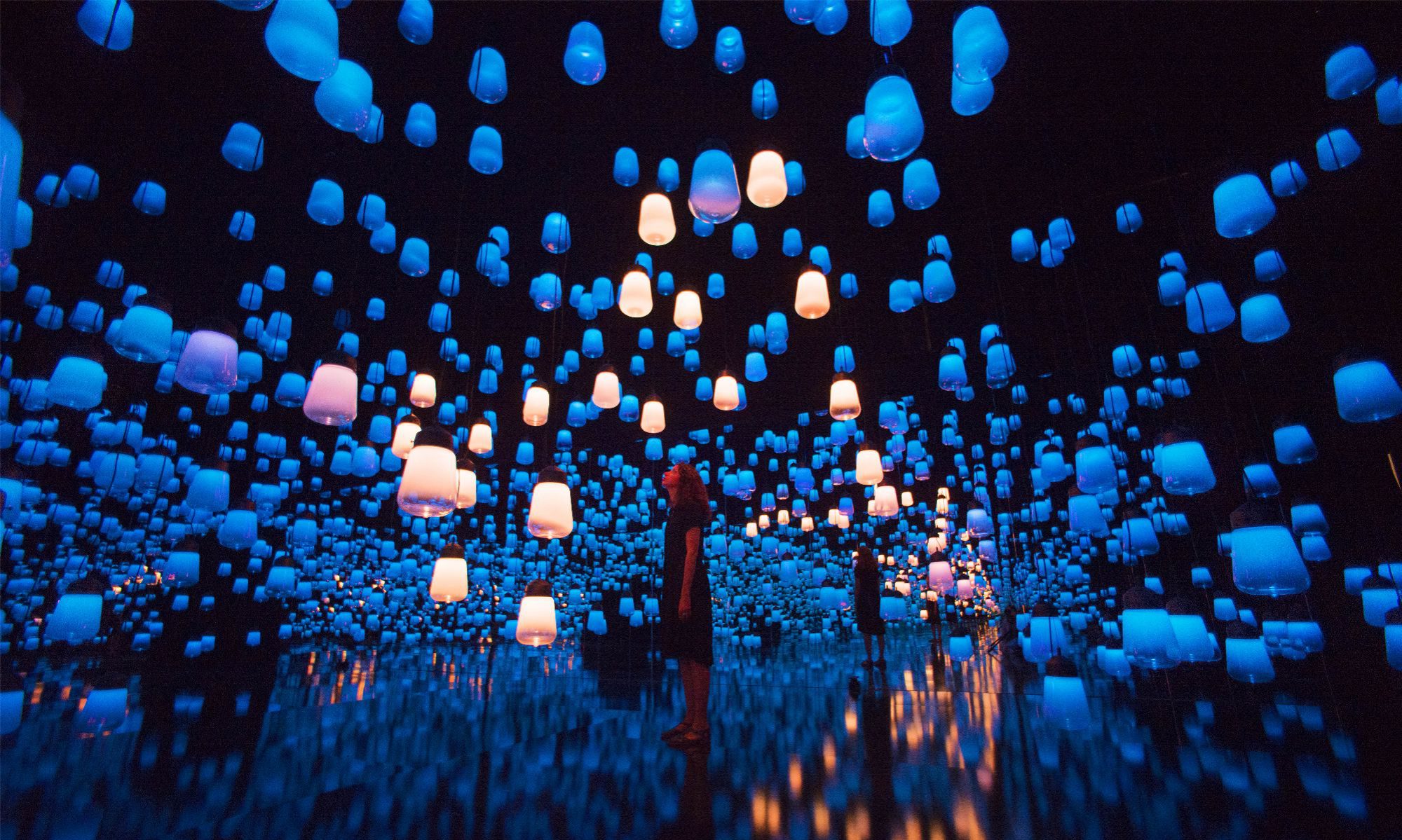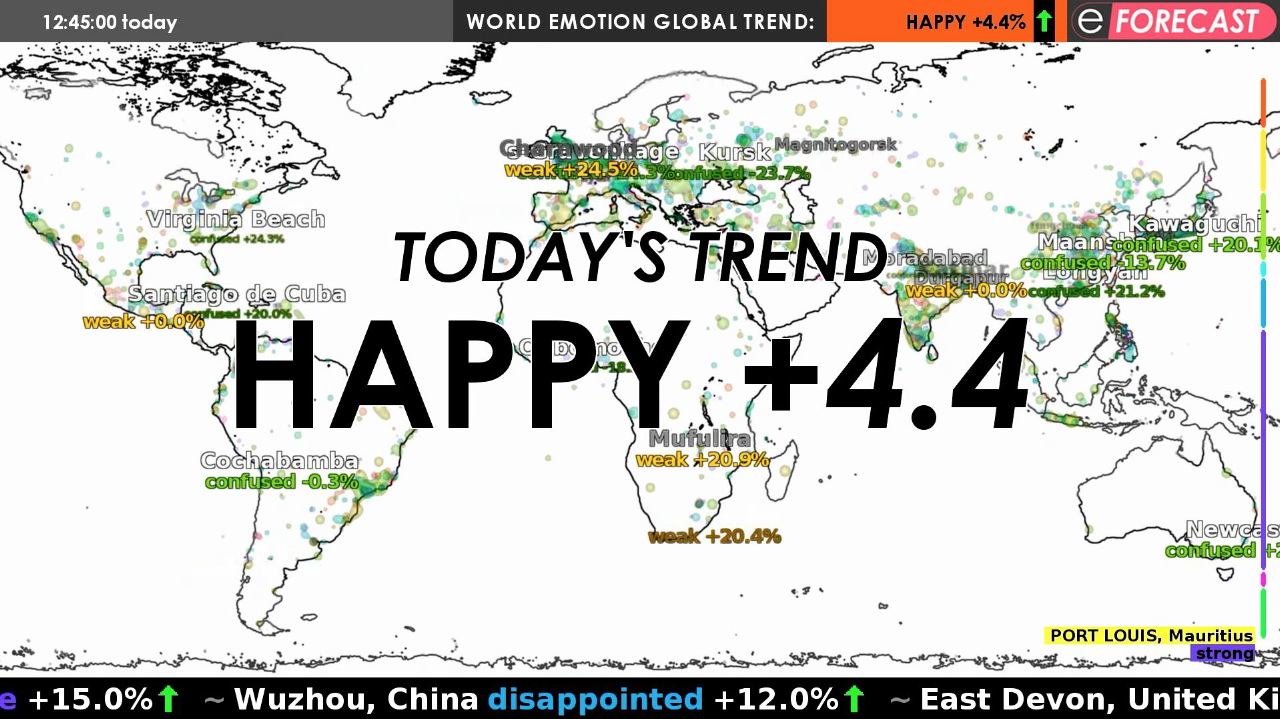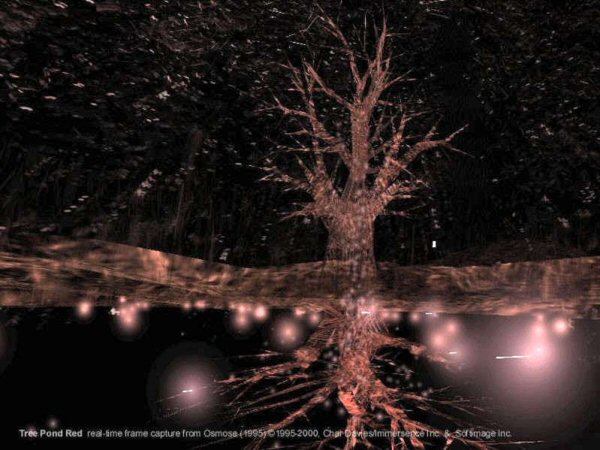Roy Ascott in his 1990 essay “Is There Love in the Telematic Embrace?“ acknowledged that there are, amongst the critics of art involving new media “deep seated fears of the machine coming to dominate the human will and of a technological formalism erasing human content and values.” A series of questions that stemmed from those fears kept being asked since the dawn of the industrial revolution, such as whether telematics increase or decrease communication and how much information overloading has burdened us due to the advent of modern information technology, etc. Benayoun with his new media creation directly addressed many of these concerns with a humanistic approach, declaring there is love in new media art and that the human touch will not be easily erased as long as human content and values govern the media.

The award-winning New Media artist, theorist, curator, and a professor is born in Algerian‘s war zone and grew up in Paris. But having spent much of his time exhibiting and lecturing abroad, he sees himself as a global citizen. Benayoun even gave himself a Chinese name with profound Confucius meaning, MoBen, meaning “Do Not Run”. His work has won more than 20 international awards, including the Villa Medicis Hors les Murs, more than four Ars Electronica awards (including the coveted Golden Nica), Siggraph, Imagina, SACD and 4 International Monitor Awards. In 2014, MoBen was nominated for the Prix Ars Electronica Visionary Pioneer of Media Art award. Over 40 years, he has realised many outstanding art installations and interactive exhibitions employing various new media, including video, immersive virtual reality, performance, the Web, interaction technology, etc.
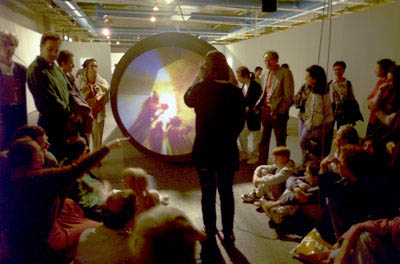
In 1995 when the Web was just emerging, Maurice Benayoun created the work The Tunnel Under the Atlantic. A virtual underground world is formed by blocks of layered images taken from the collections of the Pompidou Center in Paris and the Museum of Contemporary Art in Montreal. The visitors at the respective museums were equipped with VR “pickaxe” to dig a symbolic tunnel through the “cultural obstacles” in order to “meet” each other.
First meeting, The Tunnel under the Atlantic (1995)
Many visitors returned a few days in a row participating in the digging. Finally, it took six days for the first encounter to take place in the tunnel and the above video shows that exciting moment. It looked acutely familiar to that moment from fifteen years ago when Kit Galloway and Sherrie Rabinovitz brought the people from the opposite coasts of America together in Hole in Space. The lengthy digging process prompted us with the questions of what the visitors are after. While not knowing who awaits at the other end of the tunnel and not knowing what one will encounter on the way, there was a suspensive romance being established. It tickles the visitors to want to learn who they could possibly meet at the other end of a tunnel. This romance that is born in the virtual tunnel shows how the intention of wanting to connect will always trump media constraints.
A counterexample of how the machine might take the upper hand over human content and values is offered by World Skin (1997). It is realised in a CAVE environment, an immersive virtual reality room that frees the users from head-mount VR devices that confine their movement, won Maurice the Golden Nica Award in the interactive Art Category at the Ars Electronica Festival. A collage of war photographs and pictures from different war zones constitute the visual of a world of grim violence. The audio mimics the sounds of breathing, creating the effect as if in this world, to breathe is to suffer. Visitors may take pictures of the scenes with the cameras that are suspended from the ceiling, and immediately after the shutter is clicked, the frame disappears from the screen and is replaced by a white shadow. These pictures are then printed out and could be taken home with the visitors. A simple act of click, if performed by visitors of World Skin would appropriate a piece of the war zone, if performed by a sergeant controlling a drone would fire a missile that flattens a town in Syria. Essentially the artist warns us with this powerful artwork, machine could dominate human and we might not be that far away from Ivan Sutherland‘s projection in The Ultimate Display, “A chair displayed in such a room would be good enough to sit in. Handcuffs displayed in such a room would be confining, and a bullet displayed in such a room would be fatal. “
As technology advances fast, today a situation we constantly face is information overload, caused by the massive amount of information generated every day. It has been anticipated by Vannevar Bush‘s groundbreaking essay As we may think in 1945 and further referred to by Douglas Engelbart as “the complexity/urgency factor had transcended what humans can cope with.” Among the tons of information generated today by the global network, since 2005 Maurice Benayoun has been particularly intrigued in collecting data on human emotions globally. A series, named “The Mechanics of Emotion”, is born growing out of the idea that the Internet works like a nervous system of our world and that messages sent between users crossed “zones of pain and pleasure” near and far.
Emotion Forecast, 2011
Emotion Forecast, one of the works in the series, collects real-time data from search engines and then map them to 3200 cities, to anticipate the emotional wellbeing of 48 emotions pertaining to these locations in the next 2 days. The stock market display is adapted to question if too much importance has been attached to financial matters while people – the city’s principle raison d’être – are neglected.
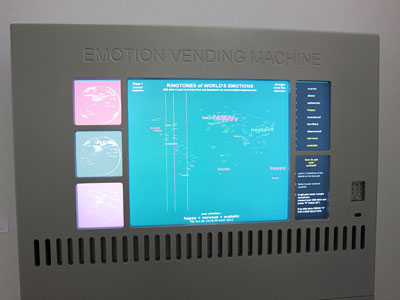
Emotion Vending Machine
Emotion Vending Machine is another work from this series. Just as any other automatic vending machine, the user can choose among a list of products, only here the real-time emotions of the world are the products to be dispensed. (For example, “scared”, “ecstatic”, and “terrified”.) Based on the selection, respective “musical cocktails” will be dispensed to provide a cure. Additional to offering a wry twist on artist’s ongoing critique of consumerism, in asking visitors’ participation, the artist asked the fundamental question, “Beyond technology isn’t it people who are trying to have a better life?”
One of the features that sets humans apart from other beings is that we have the ability to experience a wide range of complex conscious experience, emotions. Darwin argued that emotions actually served a purpose for humans to survive and reproduce, thus essential to our very existence on this planet. By making the very humanistic expression, emotion, the subject of this series, big data as a technical, social, and political concept is highly romanticised and humanised. The Mechanics of Emotion represents the humanistic approach the artist used as a direct elimination of the fear that technology would overwhelm and dehumanise the arts.

In 2014 Benayoun curated the Open Sky Project, a video art exhibition that intent to enrich and enliven the urban skyline of Hong Kong with art and culture. It was envisioned on the 77,000 square meter LED screen of International Commerce Centre (a 108-storey, 484 meters tall commercial skyscraper), exhibiting artworks that are created site-specifically by cutting-edge media artists as well as exceptional works by up-and-coming young artists. The ICC media façade represents about half the surface of the Hong Skyline video displays, which are dominantly occupied by apathetic and bleak commercial advertisement boards

Jim Campbell, San Francisco based artist renown for his LED light works, contributed Eternal Recurrence, in which people gracefully swim in the pool/façade with the inherent gravity-defying up down motion forced by the shape of the building. Others also play with the gravity factor of the site, turning the façade into a video game screen. For instance, there are Tetris blocks falling from the sky and doodlers hopping up a never-ending series of platforms. Until it is halted in 2016, this program offered more than 100 artists and students, the opportunity to exhibit their work in the public space. According to my friends who have seen it, it is a truly “wonderful and inspiring” sight in the often too stuporous Victoria Harbour. Besides achieving the original intention of “enrich and enliven the urban skyline”, this project also softened a seemingly harsh and callous silhouette of the metropolitan skyline of Hong Kong. When the scene is shared by thousands of people, a romance that connects the entire city is born.
Often fascinated with the new visual technology made accessible to artists, as one of the most cutting-edge artists of our time, Benayoun understands technology merely functions as a vehicle. Similar to Vannevar Bush calling memex an “enlarged intimate supplement to one’s memory”, Benayoun agrees though technology has brought tremendous opportunities, it should serve, as a supplement, to better communication, to help people live happier and make the city a warmer place to be in. There should be no fear of machine dominating the human will, as long as the media is governed by love.
